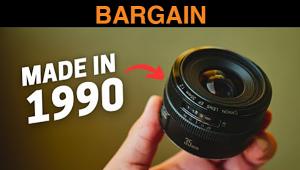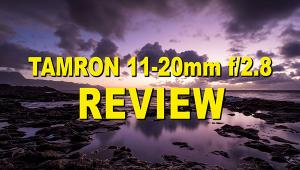Leica’s Tri-Elmar 16-18-21mm f/4; Not A Zoom, But Three Focal Lengths In One
If you own and use an M-series Leica, a Zeiss Ikon, or a bayonet-mount Voigtländer Bessa, Leica’s 16-18-21mm Tri-Elmar is so staggeringly desirable that it is almost easier to list the reasons for not buying one than to list its advantages—though these are easy enough to list, too. It is compact, sweet handling, sharp, contrasty, rangefinder-coupled, unbelievably convenient, and unique.
 |
|
|
But let’s just try turning the review on its head, and try to talk ourselves out of buying it. We believe that for many people, it will easily survive this. We also believe that unless it can survive such a contrarian attack, it’s probably best not to buy it. The same is true, of course, of any other piece of photographic equipment.
The wide angle Tri-Elmar (hereafter WATE, its all but universal nickname) starts at a disadvantage, at well over $5000. A large part of this is due to the decline of the dollar. Despite its stiff price, it can replace two or three other lenses. Although it is unlikely that many would buy 15mm, 18mm, and 21mm lenses, the 15-21mm combination is not unusual and we are in the unusual position of using all three: Frances loves the 18mm, and could live with it as her sole ultra-wide, while Roger uses both 15mm and 21mm on both digital and film. So let’s try to find some more reasons not to buy one.
 |
|
 |
|
|
First, you may not have a camera that will accept it; or you don’t like ultra wides; or you want something even wider. But if you habitually use a 21mm on an M-mount camera, and sometimes wish for something wider; or if you already have an M-mount 15mm, but don’t use it as often as you expected, because it is too wide; or if you use both a film Leica and an M8, and wish your lenses were equally suited to both; in those cases, the WATE is hard to resist.
Even today, 15mm and 16mm rectilinear-drawing lenses (as distinct from fisheyes) are not common, and if you have need of one, it may be worth considering the purchase of an M-mount body. The difference between 15mm (Zeiss f/2.8, Voigtländer f/4.5) and 16mm is trivial in practice, and any ultra-wide for a rangefinder can be much more compact, and deliver better quality, easier, than the reverse-telephoto (retrofocus) designs needed for reflexes. Lenses wider than 15mm are even rarer.
 |
|
|
If you use both film cameras and an M8, then you have the sublime convenience of a lens which “overlaps,” as it were, on the two bodies. Allowing for the crop factor of the M8, the equivalent focal lengths are 21-24-28mm. You therefore have, in effect, a 21mm and wider for film and a 21mm and longer for digital. If 21mm is your standard ultra-wide, as it is for Roger, then you really do get two lenses (one film, one digital) for the price of one.
 |
|
|
All right: that’s two reasons not to buy one. Either you can’t afford it, or you can, but you don’t want it. Let’s assume you can just about afford it, though, and that you really, really want one. What other objections are there?
Well, there’s the speed. Admittedly, the only 18mm competitor, from Zeiss, is the same speed at f/4, and while the 15mm Voigtländer is 1⁄3 stop slower at f/4.5, the 15mm f/2.8 Zeiss is a full stop faster. It’s huge and expensive, and not rangefinder-coupled, but it is a stop faster.
 |
|
|
At the 21mm end, the case is more convincing. There is a choice of 21mm f/2.8 lenses, even before you start considering the (admittedly very expensive) ultra-fast 21mm option introduced at photokina.
- Log in or register to post comments

















































